The Warshawsky Collection
May 19th, 2015
|
This Spider table lamp with a Mushroom base and spider finial, circa 1905, sold to a woman in the room for $110,000 (est. $40,000/60,000). With a Lillian Nassau, New York, 1969, provenance, the lamp was chased by two buyers in the room and others on the phones. It is 18" x 15 1/8" with vibrant hues of red, yellow, orange, and green.
This rare circa 1905 jardinière, inset with molded Favrile glass shells set against an elaborate bronze ground of interlacing strap work, sold for $112,500 (est. $25,000/35,000). The buyer was on the phone with Sotheby’s Chicago senior vice president and senior specialist for fine arts, Gary F. Metzner, who was in New York City for the sale. The 3¾" x 14¼" jardinière is one of only two examples presently known of the model, according to Sotheby’s. |
Sotheby’s, New York City
Photos courtesy Sotheby’s
Tiffany Studios lamps go beyond the realm of decorative art into fine art, and collectors are drawn to their modern aesthetic design. With balanced, vibrant colors, crisp casting, thin and elegant lead lines mixed with thicker curved ones, and multihued patinas, the forms and decoration are as modern today as they were when Louis Comfort Tiffany and his staff of designers, many of them women, created them over 100 years ago.
“The Warshawsky Collection: Masterworks of Tiffany and Prewar Design,” offered by Sotheby’s on May 19, attracted in the salesroom a crowd of 60 collectors and dealers who knew one another intimately. “I hope we’re not bidding against each other,” said one dealer to another, “but I wish you luck.” It goes without saying that that’s precisely what happened.
Bidding was vigorous in the room and on the phones, and the sale with 138 lots totaled $7.95 million, with 98.6% of lots sold. The top lot, an Oriental Poppy floor lamp, sold to dealer Sandra van den Broek for $1,066,000 (includes buyer’s premium), a world auction record for the model.
“It was fantastic,” said a longtime private collector when he was asked what he thought of the lamp. “It was a ten!”
More than three-fourths of the lots exceeded their presale high estimates. Only two lots were passed—a “rare” pebble table lamp and an “elaborate Peony” table lamp—both of which were “aggressively estimated,” said the private collector, who added, “Overall, the estimates were conservative and realistic. She [head of sale Jodi Pollack] did a very good job.”
“We saw intense competition at all price points from established American collectors as well as international clients new to Sotheby’s and new to our field, with multiples of the sale’s top works purchased by Asian collectors,” said Pollack, head of Sotheby’s 20th-century design department. Asian collectors were active in Sotheby’s design sale in December 2014 as well.
This sale was divided into four sections: masterworks of Tiffany Studios, American Arts and Crafts, the Liberty Style, and Art Nouveau. The hefty catalog was filled with testimony to the insatiable collecting passion of Roy Warshawsky, who collected from the late 1960s until he died at age 81 in 1997. He ran his family’s mail-order car parts company in Chicago and traveled extensively. The Warshawsky daughters wrote loving tributes to their parents for the catalog, and countless family photographs appeared, many of them in Tiffany and Liberty silver frames that sold well.
“A slew of new buyers spent extraordinary amounts of money for smaller things [such as frames],” said dealer Sandra van den Broek. “They are wonderful objects that were bought forty to fifty years ago and haven’t been on the market,” she explained, adding that she knew Roy Warshawsky since she is from Chicago. “He was well regarded and a wonderful man. I bought the best lamp [at the sale],” she said, noting that a Nasturtium hanging lamp and a 20" Poppy lamp, which usually bring over $100,000, were bought at “reasonable” prices of $81,250 and $75,000.
“There was depth and strength in the sale, except for the lamps,” said a longtime private collector. “There’s a Wisteria in every sale. Unique things, like the Oriental Poppy floor lamp, did well,” he pointed out.
A symposium held at Macklowe Gallery in New York City a few days before this sale gave 50 collectors the opportunity to expand their knowledge about the world of Tiffany Studios. Ben Macklowe spoke about current trends, values, and authenticity in the market; Margaret Hofer, curator of decorative arts at the New-York Historical Society (N-YHS), gave a detailed account of Clara Driscoll and the “Tiffany Girls,” designers in “the women’s department” at Tiffany Studios; and John Loring, design director emeritus at Tiffany & Co., spoke about the jewelry designs of Louis Comfort Tiffany.
The N-YHS is opening a new 3000-square-foot gallery in December 2016 to showcase 100 Tiffany lamps, many from the collection of Dr. and Mrs. Egon Neustadt, said Hofer. “The gallery will be interactive,” she explained. Macklowe offered to donate 10% of any sales made during the afternoon symposium to the new N-YHS gallery.
 Besides the Tiffany and prewar design sale, Sotheby’s offered art collected by the Warshawskys in its American art sale, held May 20. On June 5, 1996, Sotheby’s had sold 142 Tiffany lamps from the corporate collection of Warshawsky and Co.
Besides the Tiffany and prewar design sale, Sotheby’s offered art collected by the Warshawskys in its American art sale, held May 20. On June 5, 1996, Sotheby’s had sold 142 Tiffany lamps from the corporate collection of Warshawsky and Co.
For further information, call (212) 606-7000 or check the website (www.sothebys.com).
|
|
|
|
|
|
|
|
|
|
|
|
|
|
|
|
Originally published in the August 2015 issue of Maine Antique Digest. © 2015 Maine Antique Digest


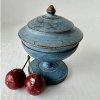












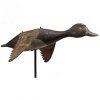



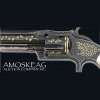



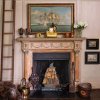


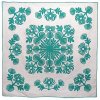





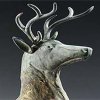

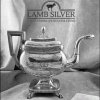






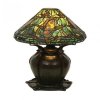



 The top lot of the sale was this circa 1910 Oriental Poppy floor lamp, bought by dealer Sandy van den Broek for a client. She paid $1,066,000 for the lamp. It was estimated at $400,000/ 600,000. She fought off bids from two phone bidders and one in the salesroom. The lamp is 77 7/8" high with a 26" shade and with a chased Pod senior floor base and pigtail finial.
The top lot of the sale was this circa 1910 Oriental Poppy floor lamp, bought by dealer Sandy van den Broek for a client. She paid $1,066,000 for the lamp. It was estimated at $400,000/ 600,000. She fought off bids from two phone bidders and one in the salesroom. The lamp is 77 7/8" high with a 26" shade and with a chased Pod senior floor base and pigtail finial. The salesroom was quiet for this lot, but the auctioneer fielded bids from the Internet, the phone, and his order bidder. It sold to a phone buyer for $231,250 (est. $120,000/ 180,000). The circa 1905 Tulip floor lamp, with a chased Pod junior floor base, 63½" x 22½", had a Lillian Nassau, New York City, 1970, provenance. It sold to an American private collector.
The salesroom was quiet for this lot, but the auctioneer fielded bids from the Internet, the phone, and his order bidder. It sold to a phone buyer for $231,250 (est. $120,000/ 180,000). The circa 1905 Tulip floor lamp, with a chased Pod junior floor base, 63½" x 22½", had a Lillian Nassau, New York City, 1970, provenance. It sold to an American private collector.

 This Moth lamp screen of leaded glass and patinated bronze chain elicited bids from bidders on three phones as well as the room and online. Estimated at $8000/12,000, it sold to a phone buyer for $40,000. Circa 1905, it measures 5½" x 11" with a 13½" chain drop.
This Moth lamp screen of leaded glass and patinated bronze chain elicited bids from bidders on three phones as well as the room and online. Estimated at $8000/12,000, it sold to a phone buyer for $40,000. Circa 1905, it measures 5½" x 11" with a 13½" chain drop. This 1915 River of Life window, attributed to Tiffany Studios designer Agnes Northrup (1857-1953), was estimated at $200,000/300,000. It sold on the phone for $394,000. Northrup was the principal landscape and floral window designer for Tiffany Studios between 1884 and the close of the studio in 1936, wrote stained-glass consultant Julie L. Sloan in Sotheby’s catalog.
This 1915 River of Life window, attributed to Tiffany Studios designer Agnes Northrup (1857-1953), was estimated at $200,000/300,000. It sold on the phone for $394,000. Northrup was the principal landscape and floral window designer for Tiffany Studios between 1884 and the close of the studio in 1936, wrote stained-glass consultant Julie L. Sloan in Sotheby’s catalog. Two phone bidders wanted this rare Peacock photograph frame and bid it up to $40,000 (est. $5000/7000). The polychrome, gilt bronze, and Favrile glass with clear glass face, 10¼" x 8¼", impressed “Tiffany Studios / New York,” is circa 1910. Sarita and Roy Warshawsky are
Two phone bidders wanted this rare Peacock photograph frame and bid it up to $40,000 (est. $5000/7000). The polychrome, gilt bronze, and Favrile glass with clear glass face, 10¼" x 8¼", impressed “Tiffany Studios / New York,” is circa 1910. Sarita and Roy Warshawsky are  This gold, aquamarine, diamond, and enamel Quatre Libellules (four dragonflies) pendant necklace, signed “Lalique,” 1903-04, 19½" long overall, sold on the phone to an American private collector for $212,500 (est. $70,000/100,000). Four phone bidders wanted it.
This gold, aquamarine, diamond, and enamel Quatre Libellules (four dragonflies) pendant necklace, signed “Lalique,” 1903-04, 19½" long overall, sold on the phone to an American private collector for $212,500 (est. $70,000/100,000). Four phone bidders wanted it. Part of the American Arts and Crafts section of the sale, this elevator door medallion from the Schlesinger & Mayer department store in
Part of the American Arts and Crafts section of the sale, this elevator door medallion from the Schlesinger & Mayer department store in  Louis Comfort Tiffany (1848-1933) painted this Figure in a Forest Clearing in 1869. His first painting as a professional artist was shown at the 1868 Paris Salon and at the Brooklyn Art Association’s exhibition in November 1868. This 13 1/8" x 19¼" gouache and watercolor over traces of pencil on paper laid down on paperboard, signed “Louis C. Tiffany 69” lower left, sold on the phone for $55,000 (est. $8000/12,000). It is probably from a portfolio of studies of the Adirondacks that Tiffany painted in 1869.
Louis Comfort Tiffany (1848-1933) painted this Figure in a Forest Clearing in 1869. His first painting as a professional artist was shown at the 1868 Paris Salon and at the Brooklyn Art Association’s exhibition in November 1868. This 13 1/8" x 19¼" gouache and watercolor over traces of pencil on paper laid down on paperboard, signed “Louis C. Tiffany 69” lower left, sold on the phone for $55,000 (est. $8000/12,000). It is probably from a portfolio of studies of the Adirondacks that Tiffany painted in 1869. There were 12 Archibald Knox clocks offered in the sale including four Cymric models. Seen here is a rare Cymric clock, model No. 5054, 1901, produced by Liberty & Co. of silver, enamel, sodalite, turquoise, and green hardstone. It sold on the phone for $125,000 (est. $20,000/30,000). Other clocks including Tudric models sold from $5000 to $68,750.
There were 12 Archibald Knox clocks offered in the sale including four Cymric models. Seen here is a rare Cymric clock, model No. 5054, 1901, produced by Liberty & Co. of silver, enamel, sodalite, turquoise, and green hardstone. It sold on the phone for $125,000 (est. $20,000/30,000). Other clocks including Tudric models sold from $5000 to $68,750. Archibald Knox (1864-1933), born on the Isle of Man, was the artist who defined English Art Nouveau or Liberty style. Several of his frames and clocks sold for one and a half to two times their high estimates at the sale. This three-piece coffee service with tray, of silver with turquoise cabochons, produced by Liberty & Co., 1903, sold on the phone for $118,750 (est. $30,000/50,000).
Archibald Knox (1864-1933), born on the Isle of Man, was the artist who defined English Art Nouveau or Liberty style. Several of his frames and clocks sold for one and a half to two times their high estimates at the sale. This three-piece coffee service with tray, of silver with turquoise cabochons, produced by Liberty & Co., 1903, sold on the phone for $118,750 (est. $30,000/50,000).








